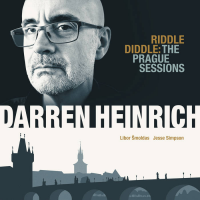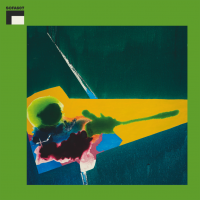Home » Jazz Articles » Album Review » Thelonious Monk Quartet with John Coltrane: At Carnegie Hall
Thelonious Monk Quartet with John Coltrane: At Carnegie Hall
Monk has never sounded more energetic or exhuberant, as though he were primed for the concert of a lifetime. His arpeggios fly off both ends of the keyboard while his solos continually surprise with their rhythmic displacements, suspenseful silent stretches, and piecemeal motifs that somehow cohere into melodic magic.
But Monk's strongest suit on this set is his "third hand," John Coltrane. The insert shows a playbill on which Coltrane's name is half the size of Zoot Sims' and Sonny Rollins' names—appropriate, since his performance is equally subordinated to, or tempered by, a commitment to Monk's music. That is not to say that we don't hear much of the expected Coltrane scalular dexterity (especially on "Blue Monk"), but at no point would it seem appropriate to generalize about his playing on this recording as "sheets of sound." He's not the vatic artist here but the aesthete, matching his ensemble contributions and even his solo statements to Monk's challenging, yet contained and disciplined, compositions.
T S Monk, in an interview on this site, characterizes Coltrane's playing on this date as being "liberated" compared to the recordings with Miles. That's one way of looking at Coltrane's layering of chords within Monk's conducive harmonic system, but the Miles' dates frequently foreground the excitement of the search for freedom itself. On the earlier, treasured Prestige sides—"Cookin'," "Relaxin'," etc.—Coltrane creates engaging tensions as he tests the limits of dominant-tonic chord patterns in conventional popular standards, and on the later Columbia sessions, beginning with "Kind of Blue," he uses modal patterns to express a rapturous melding of movement and emotion. To put it another way, on the Monk session, logic and structure are his friends; by contrast, on the dates with Miles he's the daring and visionary artist, the Promethean romantic poet.
The audio to my ears is pristine, better than many current "live" recordings. The Steinway is rumbling, bright, and present in all registers; Shadow Wilson's drum kit is in your living room, the most alive percussion I've heard on a Monk session; Abdul-Malik's bass is full but not boomy; Coltrane's horn is not as consistently forward in the mix as is usually the case, further confirmation of his role as a contributing member of a genuine quartet.
Finally, there's nothing dated about this music. But for some of us, it's like entering a time capsule and living a glorious period of American music all over again.
Track Listing
Monk's Mood; Evidence; Crepuscule With Nellie; Nutty; Epistrophy; Bye-Ya; Sweet & Lovely; Blue Monk; Epistrophy (incomplete).
Personnel
John Coltrane
saxophoneThelonious Monk: piano; John Coltrane: tenor saxophone; Ahmed Abdul-Malik: bass; Shadow Wilson: drums.
Album information
Title: At Carnegie Hall | Year Released: 2005 | Record Label: Blue Note Records
Tags
PREVIOUS / NEXT
Support All About Jazz
 All About Jazz has been a pillar of jazz since 1995, championing it as an art form and, more importantly, supporting the musicians who make it. Our enduring commitment has made "AAJ" one of the most culturally important websites of its kind, read by hundreds of thousands of fans, musicians and industry figures every month.
All About Jazz has been a pillar of jazz since 1995, championing it as an art form and, more importantly, supporting the musicians who make it. Our enduring commitment has made "AAJ" one of the most culturally important websites of its kind, read by hundreds of thousands of fans, musicians and industry figures every month.




















